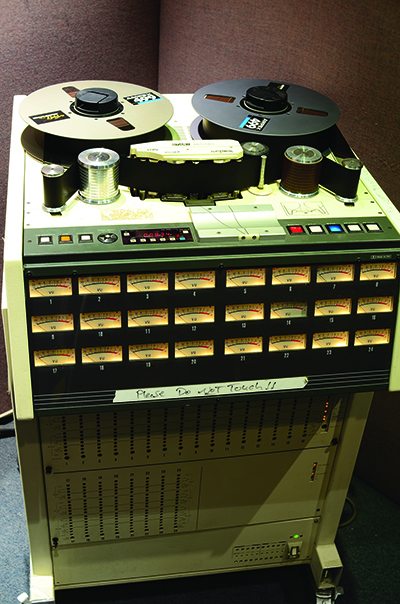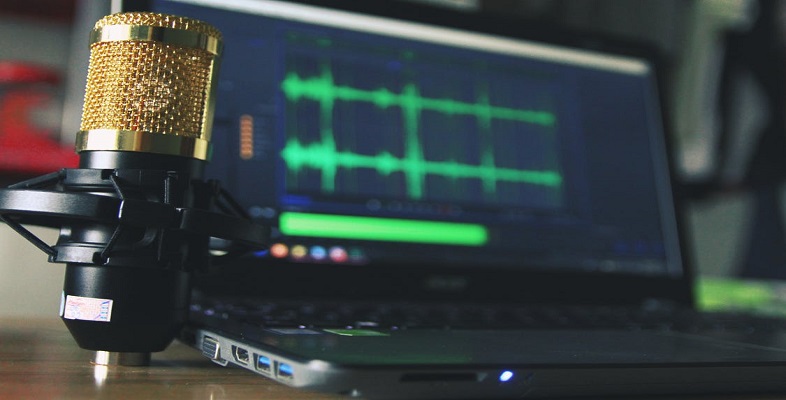3.3 Multi-track tape recording
The importance of tape recording to record production cannot be overemphasised. From its development until the late 1970s, the tape recorder was at the heart of the professional music recording studio. Initially, the full width of the standard quarter-inch tape was used for making monophonic recordings. Stereo needed two tracks – one for each channel. Rather than doubling the tape width, a decision was made to halve the track width by incorporating two discrete heads one above the other in a single head assembly. As technology advanced, more tracks were able to be added. By also widening the tape, even more tracks could be incorporated, so allowing individual instruments to be recorded on separate tracks for down-mixing at a later date. Figure 12 shows a professional 24-track analogue tape recorder using special 5 cm (2 inch) wide tape. These complex machines are capable of reproducing high-quality sound for each track and they represent the pinnacle of analogue multitrack tape recorders.

The expansion from mono through 2, 4, 8, 16 and up to 24 tracks over the course of the late 1950s to 1970s allowed the development of recording and production techniques (and beyond that via the synchronising of multiple tape machines even 48 tracks were common). For example, the early mostly ‘live’ recordings found in early Beatles recordings were recorded using several microphones all mixed down to a two track tape machine. But since most radio broadcast and portable record players only supported mono reproduction, all of the Beatles records were primarily mixed down to mono. Stereo versions were also produced at the request of the record label, but these were of secondary importance to the producer George Martin, who delegated the task to other engineers.
When EMI started using 4-track tape machines at their Abbey Road Studios in 1963, a greater degree of freedom entered the recording process. The additional tracks allowed different parts to be added to the recording at different times. It also allowed tracks to be ‘bounced’. If three tracks contained, for example, drums, bass guitar, and lead guitar, these could be mixed together and recorded onto the fourth track on the same tape, allowing those original three tracks to be re-used for additional instruments. Of course, the mix had to be right, because it was not possible to return to the original tracks and try again once they had been replaced.
As the capability of tape machines expanded to 8 and 16 tracks in the late 1960s and 24 tracks at the start of the 1970s, the need to bounce tracks, and to commit to mixing decisions decreased. It was still a very useful technique, but usually the main elements of the recording would be kept separate. A typical use for bouncing tracks in a 70s recording session might be to record the main parts on the first 16 tracks, and then use 6 tracks for backing vocals. Once all of the backing vocals were recorded, those 6 tracks could be mixed and bounced onto a single track, leaving plenty of tracks for overdubbing other instruments.
It was possible to link up two tape machines so that they were perfectly synchronised. In practice this was tricky, but it allowed bands to record onto 48 tracks. More tracks obviously allows more options, and increases the potential for different approaches to making a recording, and that applies just as much to orchestral recording sessions, with one channel for each section of instruments, as to a popular recording. The trade-off is that this process can be much more costly, and decisions about mixing can be made far more complicated and subject to change, thus making the whole process far more time consuming.
